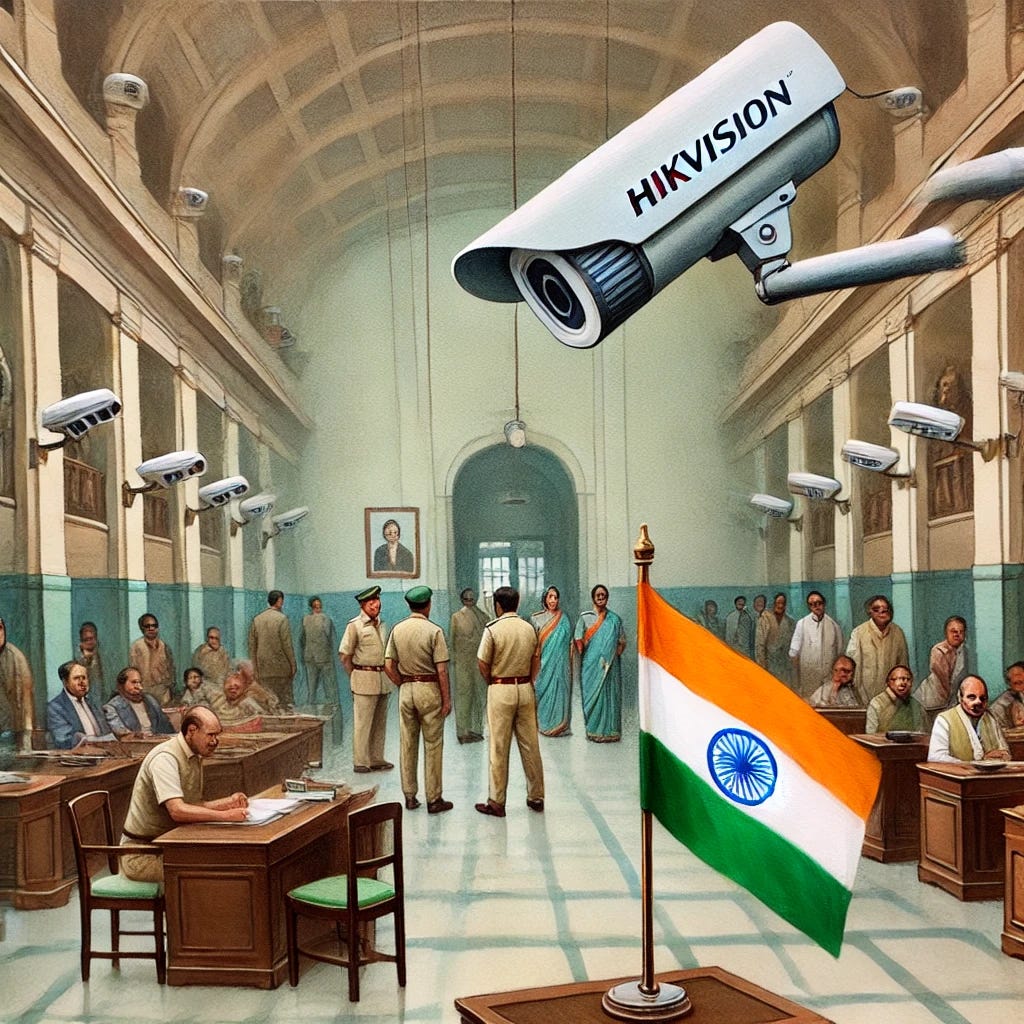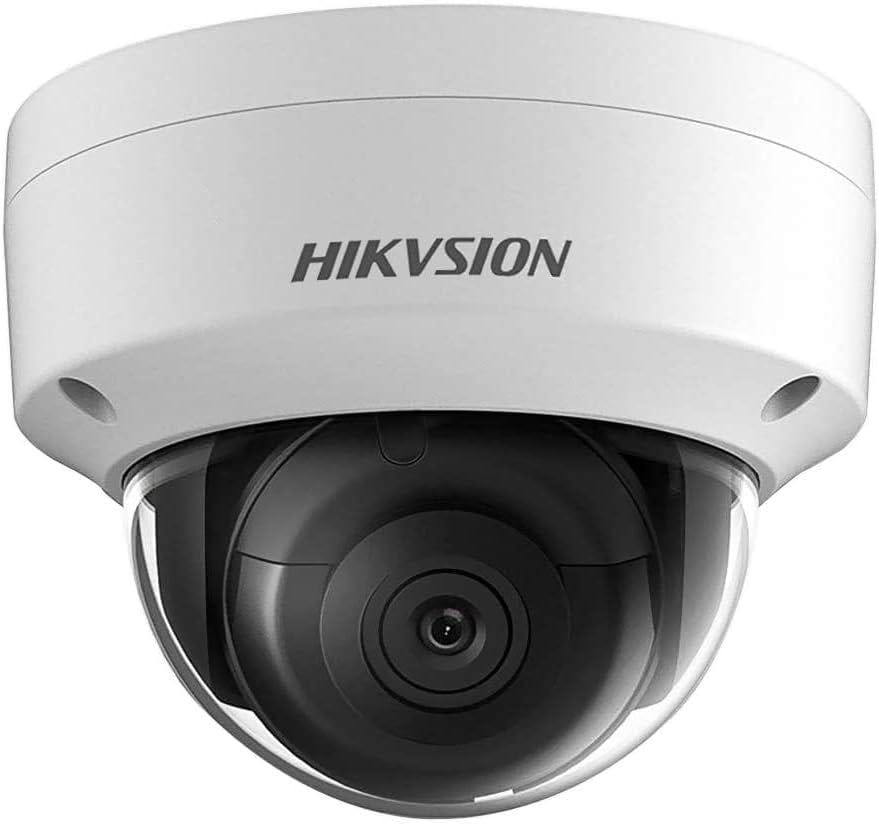Are We Allowing the Chinese a 24x7 Peep into our Corridors of Power?
We Still Have Chinese HikVision Security cameras in our Corridors of Power.
Safeguarding National Security: Rethinking India's Cyber-Surveillance Procurements
Introduction: A Call for Renewed Vigilance
The continued presence of China-made Hikvision surveillance cameras in sensitive Government of India offices should sound alarm bells for national security experts and policymakers. This article delves into the complexities of India's reliance on foreign technology for critical infrastructure and highlights the potential risks posed by Chinese-manufactured surveillance equipment. The aim here is not to incite fear, but to prompt a strategic reassessment to ensure the security and sovereignty of India's digital infrastructure. This is particularly crucial in a climate where political rhetoric increasingly positions India in strong and staunch opposition to China.
Surveillance Under Scrutiny
The Hikvision Controversy
During a recent visit to India's Ministry of External Affairs, Jeremy Page, the Asia Diplomatic Editor of “The Economist,” observed a troubling reality. A surveillance camera manufactured by Hikvision, a Chinese company with controversial ties and banned in several Western countries for security reasons, was still operational within the premises, which are normally subject to strict access controls. This incident, reported by a respected foreign journalist, is not isolated but part of a broader narrative highlighting the presence of Chinese technology in Indian governmental facilities, raising significant security concerns.
India's Response to Border Tensions
Post the 2020 border skirmishes, India has taken significant steps to decouple from Chinese technological influences. The Indian Navy’s proactive removal of Hikvision systems from its bases underscores the heightened awareness and initiatives aimed at securing national defense mechanisms against potential espionage. Despite these efforts, the continued presence of these HikVision cameras in high-security zones like South Block and Sena Bhawan is a paradox that undermines the strides taken towards securing national assets.
A Closer Look at Hikvision's Operations in India
Prama Hikvision India: A Strategic Yet Concerning Alliance
Hikvision’s foothold in the Indian market is fortified through its joint venture with Prama Technologies, establishing its first overseas partnership. Officially branded as Prama Hikvision India Pvt. Ltd., this collaboration has facilitated a significant penetration of Chinese surveillance technology into the Indian market. Their extensive product range, including advanced surveillance cameras and network solutions, is detailed on their official website, Prama Hikvision India. While the company asserts that it serves various sectors including government, the details of these relationships are not transparent, raising questions about the depth of integration into national security systems.
Government Procurement Policy’s Ambivalent Stance
Despite the apparent risks, there remains a concerning ambiguity in government policy regarding the use of Hikvision equipment. While some sectors of the government have initiated bans or restrictions, others continue to operate under a veil of uncertainty, potentially jeopardizing the integrity of national security.
Comparing Global Responses
USA and UK Stance on Hikvision: A Comparative Overview
The United States and the United Kingdom have adopted contrasting approaches towards Hikvision, a company at the center of global security discussions. In the United States, the Federal Communications Commission (FCC) implemented a ban on video surveillance products made by Hikvision and Dahua, categorizing them as significant national security threats due to their accessibility to the Chinese government. This ban was broadly supported by a federal appeals court, despite criticisms that the FCC's definition of "critical infrastructure" was overly expansive. As a result, the U.S. has ceased all future authorizations for the import or sale of Hikvision's "communications equipment," firmly marking it as a risk to national security.
Conversely, the United Kingdom has acknowledged the security risks posed by Hikvision cameras but opted for a more measured approach. While the UK has restricted the use of these cameras in sensitive sites related to defense and intelligence, it allows their continued use in less critical public facilities and police stations. Unlike the U.S., the UK government has not issued a complete ban but instead has set a timeline for gradually removing the equipment from key government locations. This divergence highlights the varying degrees of caution exercised by different nations in response to the same perceived threat.
India’s Current Posture
While India has shown initial resolve by banning Chinese apps and demanding scrutiny over investments, the continued use of Hikvision cameras in critical infrastructures reflects a concerning inconsistency. This situation calls for a unified and robust policy that aligns all sectors of government and infrastructure against the vulnerabilities posed by foreign surveillance technology.
The TikTok Dilemma: A Comparative Analysis of US and Indian Responses
The challenges presented by TikTok, another significant player from China in the digital space, illustrate a critical aspect of cybersecurity. The United States has taken a stringent approach towards TikTok, addressing the concerns over data privacy and national security more aggressively. In 2020, amidst growing apprehensions that the data collected by TikTok could be accessed by the Chinese government, the US Congress passed bipartisan legislation effectively banning the app. This decision, under challenge in US Courts, was rooted in fears that the app could be used for mass surveillance and psychological influence, especially among the younger generation.
In contrast, although India was the first nation globally to ban TikTok following the border skirmishes with China, its stance on other Chinese technology, like Hikvision cameras, appears inconsistent. The proactive ban of TikTok set a precedent for decisive action against potential cybersecurity threats; however, the continued use of Hikvision surveillance systems in sensitive government areas suggests a gap in the broader implementation of this cybersecurity policy. This discrepancy raises concerns about the effectiveness of the overall strategy to safeguard India's digital sovereignty against intrusions and influences by potentially hostile foreign entities, particularly those from China.
The Hikvision Dilemma: India's National Security at a Crossroads
The case of Hikvision in India starkly highlights the complex challenges at the intersection of technology and national security. As India aims to become a digital superpower, it is crucial that its policies not only react to threats but also proactively strengthen its cyber and physical security frameworks to ward off potential adversaries. Government organisations, notorious for operating in silos, must navigate the complexities of procuring, installing, maintaining security cameras, and managing the data stream from these devices across multiple agencies, including the Ministry of Home Affairs, its intelligence agencies, Ministry of Finance, CISF, Delhi Police, and the CPWD. While installing security cameras in office buildings might seem trivial, the national security implications are profound, especially if there is wireless connectivity between the cameras and the data storage devices.
With recent advances in AI, a sophisticated hacker, backed by a hostile sovereign power like China, might not only see in the dark but also decipher conversations without an audio signal. This necessitates a comprehensive review and overhaul of current procurement protocols to exclude technologies that could compromise the nation's security. Only through such measured and vigilant steps can India safeguard its sovereignty in an increasingly complex cyber landscape. Without such precautions, we risk virtually inviting Chinese peeping toms into our corridors of power for an around-the-clock sojourn.





